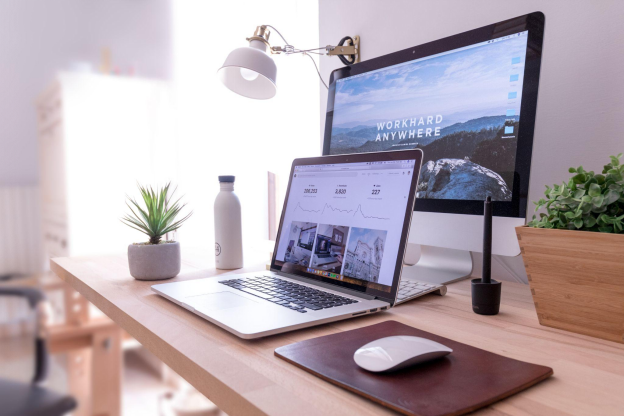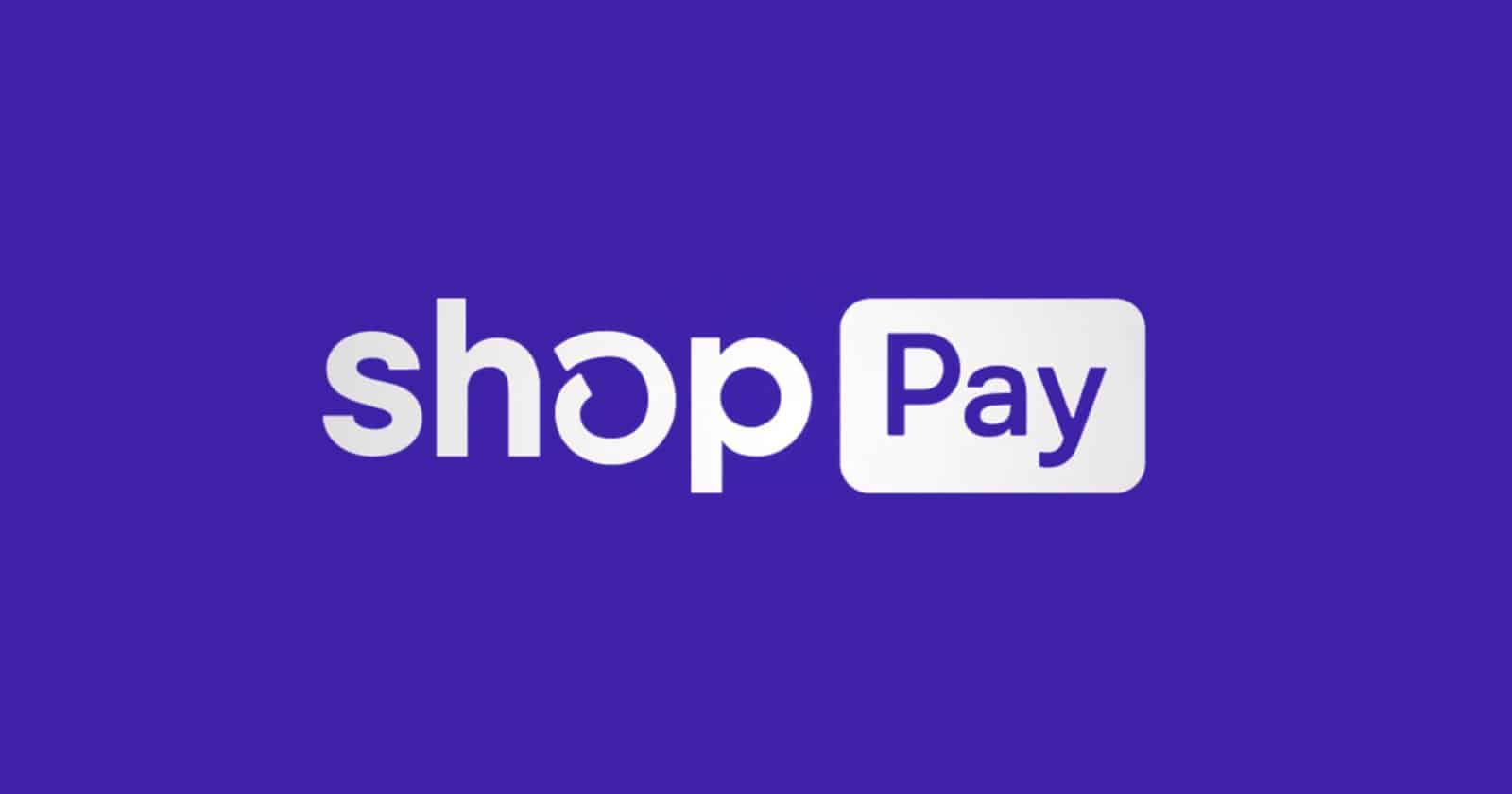Welcome to our Shopify SEO guide! In this guide, we’ll show you how to optimize your Shopify store for better search engine visibility. These tips and tricks will help you bring more traffic to your site and improve your chances of ranking higher in SERPs. Whether you’re a novice or an expert, we hope you find this guide useful! Let’s get started.
Optimizing your Shopify online store for search engines is important to attract new customers. The easier it is for people to find and use your Shopify store, the more likely they are to buy from you. Search engine rankings have a significant impact on how easily shoppers can find your store. Hence, you must definitely focus on Shopify SEO and opt for an eCommerce SEO package. It’s important to compare SEO pricing from various reputable companies before hiring one.
However, beware of common SEO scams and choose only experienced SEO agencies and companies. The higher your eCommerce store ranks in search engine results, the more traffic it will receive. Naturally, this leads to increased sales. Many search engine optimization (SEO) principles are based on giving users a positive experience. So, SEO optimization also certainly leads to a better customer experience. In this post, we have discussed how Shopify SEO works, Shop Pay payment option and the best practices.
What is Shopify SEO?
Shopify includes several SEO-friendly features out of the box, but there’s so much more you can do to improve your search engine rankings. While SEO relies on keywords, getting your site to rank higher requires more than just sprinkling some keywords into your site’s content.
Shopify stores include some SEO-friendly features such as a blog and the ability to redirect, sometimes its features can also cause SEO issues such as duplicate content.
The following are some of the most common steps you can follow to improve Shopify SEO:
- Remove redundant URLs from the internal linking architecture.
- Get rid of duplicate paginated URLs.
- Create blog content with informational keywords.
- Structured data such as “Product,” “Article,” and “BreadcrumbList” should be added.
- Figure out how to handle product variant pages.
- Use crush.pics to compress images.
- Unnecessary Shopify apps should be removed.
9 Ways to Improve Shopify SEO and Increase Sales
Shopify sellers can take advantage of some SEO-friendly features built into the platform. Title tags, URLs, and meta descriptions can all be customized to meet the needs of your target audience. But it will take more than that to move up the search engine rankings.
Here are nine ways to improve your Shopify SEO and secure the top spot in SERPs.
Find Your Target Keywords
Keywords are the true foundation for effective SEO. After all, that is how most people begin their search for products and services. The key is to identify the best keywords for driving traffic to your ecommerce store. Begin by imagining yourself in the shoes of your customers.
What keywords would you type into your search bar to find similar products to yours?
When customers visit your page, you should be able to gather valuable information about them. Use this information to gain a better understanding of what your customers truly want from your store. Keyword research is an important part of SEO optimization, if you are new to it, Ahrefs and Ubersuggest are great tools to start with.
The following categories of keyword intent could help you frame a winning strategy:
- Visitors looking for information that could lead to a transaction.
- Transactional: the customer is ready to make a purchase.
You can target your keywords to reach them with the right information at the right time by understanding what people are looking for at different stages of the customer journey.
Look for discussions about your products on social media and online forums, and pick up on terms that are used there or you can also check out the Shopify Keyword Research Guide to get deep insight into the basics of keyword research for eCommerce. Regardless of how you decide which keywords to include, using the right ones is critical to making the most of your Shopify SEO.
Content Optimization
Content optimization is all about preparing your content so that it reaches as many people as possible in your target audience. It is an essential component of any content marketing strategy and enables all types of content marketing campaigns.
So, why is content optimization important? Because one of the primary goals of most businesses in publishing content is to be noticed by the general public. Content optimization helps your content rank higher on SERPs. Aside from that, content optimization can assist you in the following ways:
- Educate your customers
- Increase the number of incoming leads
- Get high-quality links
- Increase engagement
When it comes to content optimization, keep in mind that it is for machines, whereas the process of creating content is for humans. Businesses that can strike a balance between these processes often outperform others. SEO Olympus is a great Shopify app that can help you accomplish this without much hassle.
Content Marketing

One of the most powerful strategies to drive traffic to your website is through content marketing. By creating high-quality content that is appropriate for your target audience, you can not only increase organic search traffic but also boost sales by collecting your readers’ information and convincing them to subscribe to your email blast.
You should also optimize your product and category page content to ensure your website pages rank higher in SERPs. As an eCommerce website generally functions with multiple product pages, its chances of gaining higher SERP ranking over a variety of keywords increases when all product specific pages are optimized.
On the other hand, a blog can also be a driving factor in your Shopify SEO strategy. A blog can not only drive conversions, but it can also help to build trust and loyalty with potential future customers. Check out our blog for a more in-depth look at developing an effective content marketing checklist.
Your blogs should be part of a larger content marketing strategy, so that your marketing plan is not solely focused on blogs, but rather complements the overall marketing strategy with increased social media content and email marketing initiatives. For a true omnichannel marketing campaign, your content should be working together to drive traffic from all platforms.
Optimize the Site Structure of Your Shopify Store

One of the factors Google considers before ranking a website is its ease of navigation. The reason for this is that websites that are easy to use have higher user engagement and, as a result, lower bounce rates. This entails developing a simple navigation system that is simple for users to use. Users are the lifeblood of any digital product, and UX design ensures that they have a pleasant experience while shopping on your Shopify store.
In other words, if your website has a good navigation structure, users will stay longer and your Shopify store rank will improve significantly. When someone visits your online store, they want to be able to easily find items. The structure of your store should be orderly and logical. Make your website more user-friendly by organizing its contents into a few simple categories.
Customers should not be taken too far away from the home page. Nobody wants to get lost in a maze of links while looking for a single product.
Consider the following structure: Home Page > Category > Product Page.
This not only makes it easier to navigate, but it also makes it easier for search engines to crawl and rank your products. These features lend credibility to your site, connect customers to your store, and aid in the development of trust with your prospects.
Another structural issue that you would want to resolve is duplicate content.
Duplicate content refers to substantial sections of text inside or across domains that either exactly duplicate other text or bear a striking resemblance to it. Most of the time, this is not fabricated and could arise due to a number of reasons.
It is one of the most prevalent SEO problems that Shopify store owners face. Due to this your rankings may suffer, which may lead to decreased visitors and lost sales possibilities. Hence, it’s important to fix duplicate content problems in ecommerce websites.
Duplicate content examples include:
- Product pages (such as a collection page or multiple collections pages, a “On Sale” page, a “Bestsellers” page, a “Outlet” page, etc.) that are presented on various separate URLs.
- Pages with material that is identical or quite similar. For instance, identical product descriptions, identical product pages, similar blog posts, and duplicate pages as a result of pagination
- Your principal domain and the “myshopify” version of your domain that Shopify manages.
- The https:// version of your domain as well as the http:// version.
- The www. version of your domain as well as the non-www. version.
Google generally does not penalize duplicate content unless it is done intentionally to mislead users and skew search engine results pages (SERPs).
Image Optimization
Images are important in your Shopify store because you should be able to display what people are looking to buy! However, images can take up a lot of space, so it is important to optimize them for speed by compressing their file sizes as much as possible without sacrificing quality.

You can use modern image formats like webp to do this. Shopify also has a variety of apps like Crush.pics that can help you accomplish this without any efforts.
Product Page Optimization for Your Store

It is time to optimize your shop’s pages after you have created a simple (yet organized) site structure and chosen some valuable keywords. Start with the pages that generate the most conversions because they are the most profitable.
Begin with your home page, then move on to main product collections, and finally top-sellers pages. Page titles appear in the first line of search results and inform users about the content of the page. They can be whatever you want, but they must be consistent. A user’s decision to visit your website can also be influenced by the meta description.
They should be unique and use targeted keywords that are relevant to the needs of the viewers. Do not try to stuff keywords into your copy. Poor keyword selection can have a negative impact on your SEO. The words you use should flow naturally and add value to the information you provide.
Schema Markup
Structured data, also known as schema markup, is a type of code that you can add to the HTML of your website to help search engines understand the content on your pages. This code tells Google the title of your page, the description, the author, and other pertinent information about the page.

Including schema markup on your website can help you rank higher in search engine results pages (SERPs) and increase click-through rates (CTRs). It can also help you differentiate yourself from the competition by including rich snippets on your product pages. Rich snippets are HTML tags that you can add to your product pages to help them rank higher in search results (SERPs).
They enable you to include additional information about your products, such as star ratings, prices, and availability. This can encourage people to visit your site rather than someone else’s when they search on Google. If you are looking to do this effortlessly, then SchemaPlus is a great tool to try. It provides advanced schema technology with 24/7 support.
Link Building
The process of acquiring links from other websites to your own is known as link building. To determine the ranking of each page, search engines crawl the web and look at the links between websites. The more high-quality links your website has pointing to it, the higher it will rank in search engine results pages (SERPs).

You can obtain links for your eCommerce store through a variety of methods, including link-building tactics such as content marketing, guest posting, directory submissions, and social media outreach.
Guest posting on high-authority websites is one of the most effective ways to build high-quality links for your eCommerce store. The process of writing a blog post for another website and including a link back to your own is known as guest posting. This will not only help you build high-quality links, but it will also help you increase traffic and brand exposure.
Offer Shopify Collections

Offering product collections to your customers is another way to improve the user experience while increasing SEO results. A collection is a grouping of products that are normally hosted on your site in different categories.
By grouping them, you reduce the number of places visitors must search on your site to find these items. This improves the shopping experience for your customers while also appealing to search engines in a couple of ways.
Semantics and context are used by search engines to gain a better understanding of your product listings. Collections allow you to write detailed, meaningful descriptions with specific keywords.
This improves the user-friendliness of your page and the semantic understanding of the search engine. Shopify provides a manual collection feature to assist you in gathering products. You can also generate them automatically to highlight new, popular, or timely products (perfect for holidays and other gift-giving occasions). Collections also give you the opportunity to improve your internal links.
Your navigation menu directs visitors to each collection page, which then directs them to individual product pages. This is significant for Shopify SEO because it indicates the relevance and strength of a page, both of which can help you achieve higher search rankings.
Common Problems with Shopify SEO
While Shopify offers numerous SEO opportunities, it also has some distinct drawbacks when it comes to optimization. By becoming aware of these issues, you can plan ahead of time and develop a more effective Shopify SEO strategy.
Content Duplication
In terms of SEO, the highest priority issue we have seen created by Shopify is duplicate content. Duplicate content occurs when the same or similar content appears on two different URLs. This causes problems for search engines because they may be unable to determine which of the two pages should be considered the canonical version. Furthermore, link signals are frequently split between pages.
We have seen Shopify generate duplicate content in a variety of ways:
- Product pages that are duplicates
- Duplicate collection pages caused by pagination
Product Variant Pages
While this is technically an extension of Shopify’s duplicate content from earlier, it deserved its own section because it is not always an SEO issue.
It is not uncommon to see Shopify stores with multiple product URLs for the same product with minor differences. In this case, duplicate content issues can arise because the core product is often the same, but only a minor attribute (for example, color) changes. This means that multiple pages with duplicate/similar product descriptions and images can exist.
If left alone, this will result in another instance of duplicate content. However, variant URLs do not have to be a problem for SEO. Indeed, some sites may benefit from these URLs because they enable you to have indexable pages that can be optimized for very specific terms. Whether or not these are beneficial will vary depending on the site. Some important questions to consider are:
- Do your customers conduct queries based on different phrases?
- Do you have the resources to create unique content for every product variant?
- Is this content distinct enough to stand alone?
If your Shopify store has product variants, it is worth deciding early on whether these pages should have their own URL. If they do, you should create unique content for each variant and optimize it for the target keywords of that variant.
Robots.txt File
Shopify creates a robots.txt file for your store by default, with a number of prewritten “Disallow” commands. In most cases, Shopify’s default robots.txt rules are sufficient for most store owners. Here’s an example of Shopify’s default robots.txt rules:
A Shopify robots.txt file example
Here are some areas of the site where Shopify will not allow crawling:
- Admin section
- Checkout
- Orders
- The shopping cart
- Internal pages
- Policy pages
However, as your Shopify store grows in size and customization, there is a greater chance that you will need to modify the robots.txt file. Fortunately, Shopify now allows you to update the robots.txt file.
To make changes to the Shopify robots.txt file, store owners must first create a robots.txt.liquid file and then create custom rules. Store owners can use the following steps to create a robots.txt.liquid file:
- Log in to your Shopify admin account.
- Navigate to Online Store > Themes in the left sidebar.
- Select Actions > Edit code.
- Select the “Add a new template” link under “Templates.”
- Choose “robots.txt” from the left-most dropdown.
- Select “Create template.”
This should result in the creation of your Shopify robots.txt.liquid file. You can then add liquid code to your robots.txt.liquid file to add rules. Fortunately, adding this code isn’t too difficult, and Shopify’s official documentation does a good job of highlighting how to do it. Following these steps should give you much more control over which URLs in your Shopify site are crawled.
Sitemap.xml
Shopify will generate a sitemap.xml index file at the URL path “domain.com/sitemap.xml” by default. Shopify’s sitemap.xml index file will generate links to child sitemaps containing URLs for the following page types:
- Sitemap products 1.xml (Product Pages)
- Sitemap Collections (sitemap collections 1.xml)
- Sitemap blogs 1.xml (Blog Posts)
- Sitemap Pages (sitemap pages 1.xml)
As new pages are added/removed from the site, this sitemap.xml file will dynamically update. In general, the Shopify sitemap.xml is ready to use and does not require any modifications.
One thing to keep in mind is that any published pages will be included in the sitemap.xml file. The most common problem we encounter is that legacy pages that have been published but are no longer linked to on the site are included in the sitemap.xml file.
Crawling your sitemap.xml will help you find any instances of published pages that are included in the sitemap but are not important for search engines to crawl.
Inserting the “Noindex” Tag
While you cannot change the robots.txt file, Shopify allows you to include the “noindex” tag. You can also exclude a specific page from the index.
Redirects
Shopify does support redirects out of the box, which is fantastic. This can be used to combine old/expired pages or any other content that no longer exists. You can do so by visiting:
- Online Shop
- Navigation
- Redirecting URLs
The main thing to remember is that before you can implement a redirect on Shopify, you must first delete a page. This means you should be absolutely certain you will not use the page in the future. You can use the “Rewind Backups” app to make this process less stressful.
Log files
Shopify does not currently allow you to access log files directly through the platform. Shopify support has confirmed this.
5 Best Shopify SEO Apps
You may not be able to solve all SEO issues on your own. Perhaps Shopify SEO apps and tools are exactly what you need right now! Fortunately, Shopify has considered this and provides a number of Shopify SEO apps to assist you in increasing your online presence and attracting more visitors to your online store.
The Shopify SEO Manager app is a great Shopify tool for increasing your store rankings and is arguably the best Shopify SEO app due to its extensive list of exclusive features. It enables you to create custom meta tags, titles, keywords, and website descriptions. Furthermore, it will provide you with relevant feedback on how those categories are performing on a global scale.
This app is ideal for those who are just getting started with SEO because it provides a plethora of pre-made templates to choose from. There are also numerous helpful suggestions in the app to help you take your SEO game to the next level.
The SEO Manager allows you to test and preview how your site will perform in the ranking system before launching your changes. This is very useful because you can see what needs to be fixed right away.
You can choose between two versions of the Plug In SEO Shopify app. There is a free one that will suffice if you are a do-it-yourselfer who is just getting started with their store and looking for basic SEO optimization. Despite being free, this plan allows users to use its integrated smart analyzer to check an unlimited number of pages for SEO issues.
The paid edition Plug In SEO Plus is designed for advanced users who want to fine-tune their store’s search engine optimization to meet higher-level requirements. You will be eligible for premium support from the developers, in addition to a robust feature set and powerful optimization tools.
This includes the option to have custom templates created to perfectly fit your store’s needs at no extra cost.
Reload SEO is a keyword optimization app that is suitable for both beginners and advanced SEO store owners. Its main distinguishing feature when compared to other apps is that it analyses the content of your Shopify competitors.
The truth is that business SEO is a numbers game to elevate your store above others, not a territory that rewards fair play. Any advantage you can gain over other businesses is potential traffic for your Shopify store.
Reload SEO is a fighter in this regard, providing users with a detailed overview of the top 10 results for any Google keyword, information on what type of content the competition is creating, and recommended tips to beat them for their position in the rankings. It tracks keyword rankings for desktop and mobile in over 170 countries, making it ideal for stores with a global customer base.
AVADA SEO Suite, like most of the best SEO apps for Shopify, does it all in one package, but the best part is that it’s completely free. It will boost your store’s rankings on various search engines to increase conversion rates, speed up your website, automatically sort relevant Google Structured Data for you, increase click rate with standardized meta tags, and integrate your data with Google Search Console.
Rich snippets and social meta will be handled, allowing you to display your site preview on social channels. AVADA SEO includes a 404 broken link fixing mechanism as well as SEO analysis so you can improve how you place your keywords, product descriptions, and other elements to significantly increase your Shopify traffic.
The app is also constantly being updated. A PNG to JPG converter is currently in development. Given that it is completely free, its feature set is certainly impressive.
Shopify site owners can now use Yoast SEO. It is one of the most popular SEO apps in the WordPress ecosystem, and the addition of a Shopify app reflects the rise of e-commerce. On January 4, the company first revealed plans for a Shopify version of its well-known WordPress app.
Yoast SEO for Shopify includes features that complement those integrations. Instead of allowing merchants to display product listings, it may assist them in optimizing their pages to appear in organic, non-shopping results (like the WordPress version of the app). It costs $19 per month, as opposed to the freemium model used by the WordPress version of the app.
Shopify Speed Boost SEO Plugin
Booster: Page Speed Optimizer
Booster: Page Speed Optimizer is a one-click page speed optimization tool that can help boost pagespeed that has a direct relation with conversions and sales. It is a free app that you can install without any coding knowledge. It can be set up in 60 seconds and will speed up your Shopify store.
The app works immediately after installation and is useful for any Shopify store of any size. You can tell the difference right away; the site loads faster.
Conclusion
As Shopify usage grows, it will become increasingly important to understand the SEO implications of the platform. Hopefully, this guide has provided you with information that will assist you in making your Shopify store more visible in search engines. If you want to learn more about Shopify, you can also visit the Shopify SEO Learning Center.
Frequently Asked Questions
Why is my Shopify store not showing up in Google?
If your Shopify store is not showing up at all on Google, make sure you have registered it with Google Search Console. Additionally, try to obtain some high-quality links to your store from other websites, this is one of the most effective ways to increase a site’s visibility in search results. Remember that brand new websites can take several weeks to be indexed by search engines.’
What are the challenges with SEO on a Shopify website?
While Shopify is one of the most popular ecommerce platforms, the CMS has a number of issues that can be detrimental to SEO. Issues such as restricted URL structure and duplicate content will necessitate the webmaster’s efforts to correct.
How much does Shopify SEO cost?
Because Shopify is an eCommerce online store platform, the majority of Shopify clients want to rank nationally or internationally and sell their products worldwide. SEO plans and pricing can range from $500 to $2,000 per month, depending on the number of products and niche you are in.



























